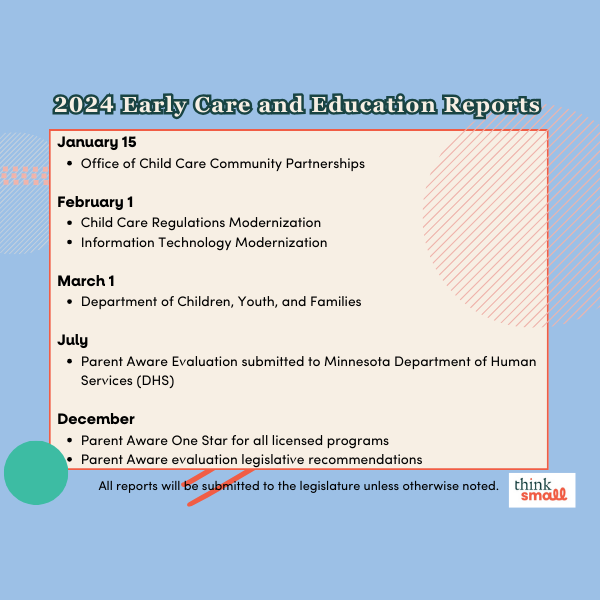 The Legislative Task Force on Access to Affordable Child Care discussed licensingrequirements and enforcement at their meeting on September 21st. State and county officials provided insight into their roles and observations, and child care providers shared their frustrations with and recommendations for licensing.Shifting Roles of County LicensorsSome family child care providers expressed a change in the way they interact with licensors. Providers used to be able to rely on licensors as a resource for clarification on requirements. Some of them now feel like that support and advice is no longer the norm.Safe Sleep for Infants
The Legislative Task Force on Access to Affordable Child Care discussed licensingrequirements and enforcement at their meeting on September 21st. State and county officials provided insight into their roles and observations, and child care providers shared their frustrations with and recommendations for licensing.Shifting Roles of County LicensorsSome family child care providers expressed a change in the way they interact with licensors. Providers used to be able to rely on licensors as a resource for clarification on requirements. Some of them now feel like that support and advice is no longer the norm.Safe Sleep for Infants
- RegulationsNew regulations around safe sleep were implemented in 2013. (View a summary of them here.) Jerry Kerber, Inspector General, noted that Infant deaths in licensed child care have decreased since then. He also clarified two rules that have caused issues recently:
-If an infant falls asleep before being placed in a crib, the license holder must move the infant to a crib as soon as practicable, and must keep the infant within sight of the license holder until the infant is placed in a crib.-When an infant falls asleep while being held, the license holder must consider the supervision needs of other children in care when determining how long to hold the infant before placing the infant in a crib to sleep. (emphasis added)
- EnforcementOn the ground, providers have had different experiences with enforcement of these rules. They report licensors instructing them to turn around right away if a baby falls asleep in the stroller on the way to the park. Beyond the fear of citation, providers noted that the new safe sleep regulations make it very difficult to care for infants. If parents do not practice safe sleep at home (no blankets or toys in the crib, baby placed on back), it can be very challenging for the infant to transition to these standards in child care. Providers stated that they want all children in their care to be safe, but practical implementation of the safe sleep rules can be very difficult.
- ImplicationsDakota County licensors hear feedback from many Licensed Family Child Care programs that they do not want to care for infants because they can be such a liability. Meanwhile, the need for infant care in the community is very high.
Inconsistencies in EnforcementDifferent counties and different licensors often enforce rules differently. One example was with biting. Biting is a natural developmental stage that many children pass through, and approved trainings cover how to deal with children who bite. However, one provider reported an incident where a colleague was cited for lack of supervision after a child in her program bit someone. Chad Dunkley, CEO of New Horizon Academy and President of Minnesota Child Care Association, reported that his centers had been cited for biting as well. Representative Franson offered that her own son was a biter, and it was difficult to deal with.Jolene Swan, Dakota County Social Worker and Licensor, noted that the regulations are often written broadly because the need to apply to different settings. However, this can also cause inconsistency. What one county might determine is “inaccessible” may not be considered inaccessible to another county, for instance. Dakota County meets often to discuss and review cases in order to achieve consistency, but it is not an easy task. Task ForceThe Legislative Task Force on Access to Affordable Child Care was established to address concerns related to child care in Minnesota. Assigned duties include assessing the child care shortage in greater Minnesota, considering uniform training requirements for licensors, and reviewing progress on streamlining paperwork. For a full explanation of the purpose and scope of the TFCC, read the bill here. See all the documents from past meetings here. View the full list of members here. The TFCC must submit a report to the legislature and Governor by December 31, 2016.








